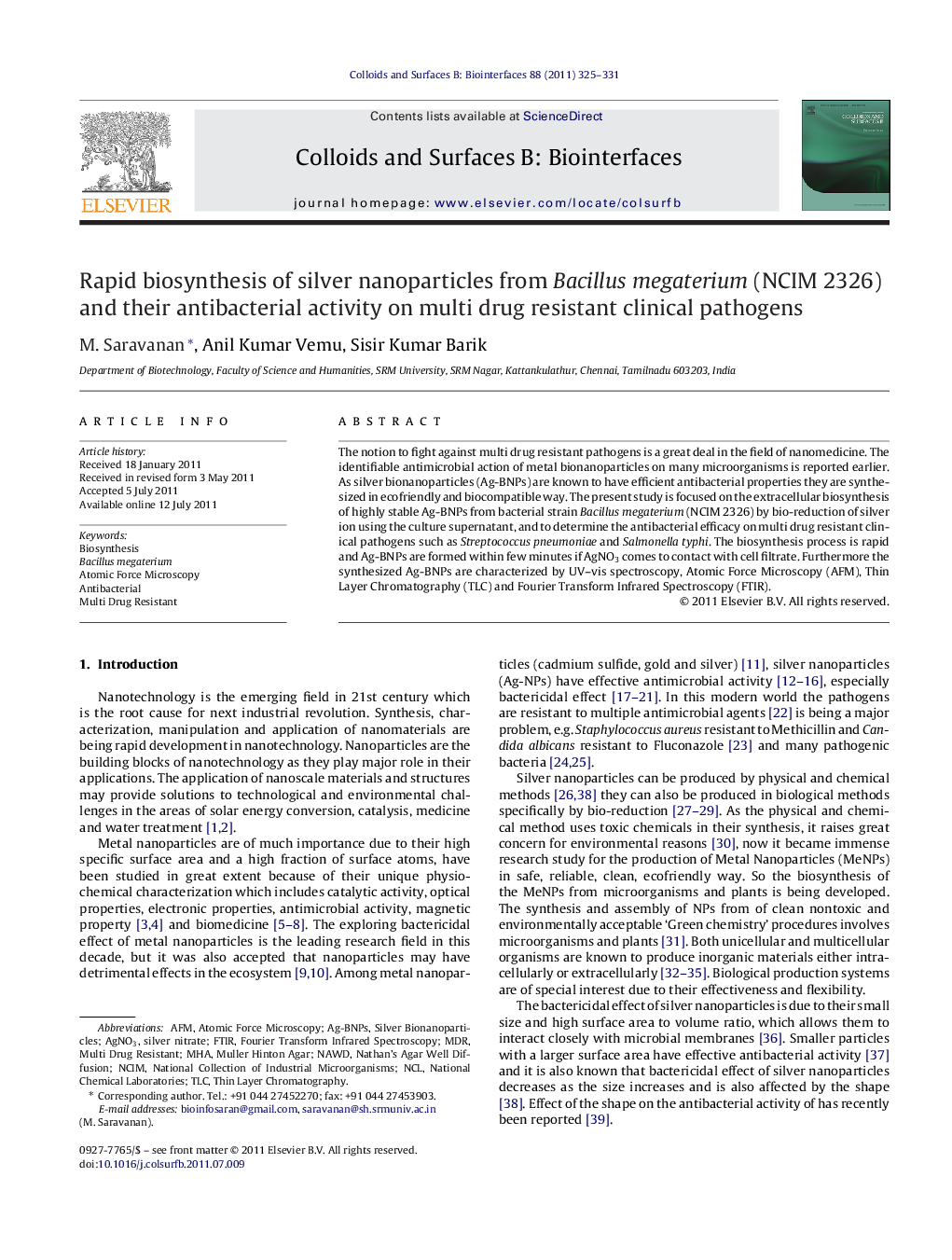| Article ID | Journal | Published Year | Pages | File Type |
|---|---|---|---|---|
| 601061 | Colloids and Surfaces B: Biointerfaces | 2011 | 7 Pages |
The notion to fight against multi drug resistant pathogens is a great deal in the field of nanomedicine. The identifiable antimicrobial action of metal bionanoparticles on many microorganisms is reported earlier. As silver bionanoparticles (Ag-BNPs) are known to have efficient antibacterial properties they are synthesized in ecofriendly and biocompatible way. The present study is focused on the extracellular biosynthesis of highly stable Ag-BNPs from bacterial strain Bacillus megaterium (NCIM 2326) by bio-reduction of silver ion using the culture supernatant, and to determine the antibacterial efficacy on multi drug resistant clinical pathogens such as Streptococcus pneumoniae and Salmonella typhi. The biosynthesis process is rapid and Ag-BNPs are formed within few minutes if AgNO3 comes to contact with cell filtrate. Furthermore the synthesized Ag-BNPs are characterized by UV–vis spectroscopy, Atomic Force Microscopy (AFM), Thin Layer Chromatography (TLC) and Fourier Transform Infrared Spectroscopy (FTIR).
Graphical abstractFigure optionsDownload full-size imageDownload as PowerPoint slideHighlights► Rapid biosynthesis of Ag-BNPs from the cell free extract of B. megaterium (NCIM 2326). ► Characterization of Ag-BNPs by UV-vis spectroscopy, TLC, AFM and FTIR spectroscopy. ► The study confirms Ag-BNPs to have efficient antimicrobial properties against MDR clinical pathogens, S. pneumoniae and S. typhi.
